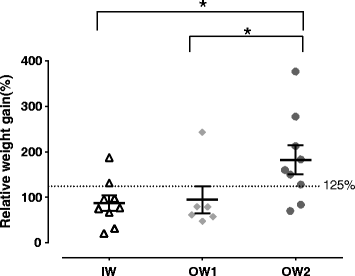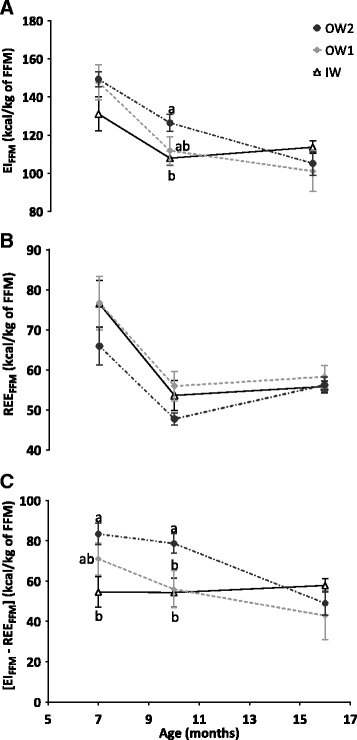Higher neonatal growth rate and body condition score at 7 months are predictive factors of obesity in adult female Beagle dogs
- PMID: 28407742
- PMCID: PMC5390368
- DOI: 10.1186/s12917-017-0994-7
Higher neonatal growth rate and body condition score at 7 months are predictive factors of obesity in adult female Beagle dogs
Abstract
Background: The risks during early growth on becoming overweight in adulthood are widely studied in humans. However, early-life predictive factors for canine adult overweight and obesity have not yet been studied. To identify factors that may help explain the development of overweight and obesity at adulthood in dogs, a longitudinal study of 2 years was conducted in 24 female Beagle dogs of the same age, sexual status, and raised under identical environmental conditions. By means of a hierarchical classification on principal components with the following quantitative values: fat-free mass (FFM), percentage fat mass and pelvic circumference at 2 years of age, three groups of dogs were established and were nominally named: ideal weight (IW, n = 9), slightly overweight (OW1, n = 6) and overweight (OW2, n = 9). With the aim of identifying predictive factors of development of obesity at adulthood parental characteristics, growth pattern, energy balance and plasma factors were analysed by logistic regression analysis.
Results: At 24 months, the group compositions were in line with the body condition scores (BCS 1-9) values of the IW (5 or 6/9), the OW1 (6/9) and the OW2 (7 or 8/9) groups. Logistic regression analysis permitted the identification of neonatal growth rate during the first 2 weeks of life (GR2W) and BCS at 7 months as predictors for the development of obesity at adulthood. Seventy percent of dogs with either GR2W >125% or with BCS > 6/9 at 7 months belonged to the OW2 group. Results from energy intake and expenditure, corrected for FFM, showed that there was a greater positive energy imbalance between 7 and 10 months for the OW2, compared to the IW group.
Conclusion: This study expands the understanding of previously reported risk factors for being overweight or obese in dogs, establishing that (i) 15 out of 24 of the studied dogs became overweight and (ii) GR2W and BCS at 7 months of age could be used as predictive factors as overweight adult dogs in the OW2 group had higher values compared the other groups of dogs.
Keywords: Canine; Energy imbalance; Growth; Obesity; Overweight; Predictive factors.
Figures






References
MeSH terms
LinkOut - more resources
Full Text Sources
Other Literature Sources
Medical

